While a tour of the Athabasca Glacier offers an awe-inspiring adventure here on Earth, some recent visitors have set their sights even higher.
In fall of 2023, a team from NASA’s Jet Propulsion Laboratory (JPL) completed its second set of tests on their self-propelling, autonomous Exobiology Extant Life Surveyor (EELS) robot at Jasper National Park’s Columbia Icefield. For the JPL team, the icefield offers a stand-in for tough-to-navigate terrain found elsewhere in the universe, such as on Saturn’s moon Enceladus.
The team is designing the robot to navigate its way through previously inaccessible places. Its goal: search for signs of life, if it’s there.
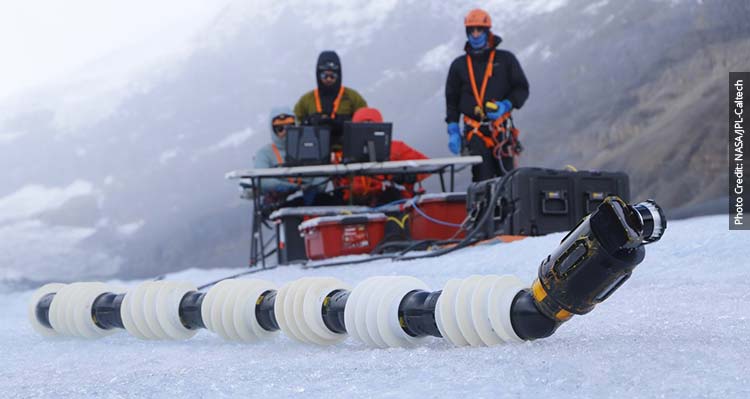
The snake-like robot is a 4.4-metre-long chain of identical modules, weighing a total of approximately 100 kilograms. Each module has three motors in it — one hinges like an elbow, another twists like a wrist and the third rotates an external screw used for forward movement. The combination of these modules allows the robot to change shape and move up, down, in and around difficult terrain. The robot can explore challenging vertical terrain by pressing against the sides of a tunnel or shaft (like climbing by pushing your hands and feet into parallel walls).
Moulins, the well-like shafts that go vertically down into a glacier, provide the perfect location to test EELS’ ability to descend, climb or hold itself in place. The accessibility and rich history of research on the Athabasca Glacier also make it a prime location for a team of 30, equipped with lots of heavy equipment, to locate and access the most useful sites for their tests.
At the Columbia Icefield, the team from Pursuit — who operate tours along with dining and lodging properties throughout the area — supported research wherever possible. Researchers were provided nearby lodging at the Glacier View Lodge, on-site maintenance facilities for secondary robot testing, transportation to and from the Athabasca Glacier aboard Columbia Icefield Adventure “Ice Explorer” vehicles and other logistical assistance. In return, JPL team members shared informative staff talks surrounding robotics, volcanology and glaciology to teach the Pursuit team further on the wonders nearby.
The partnership was rounded out by Direct Action Vertical, who provided site scouting, robot rigging and safety support.
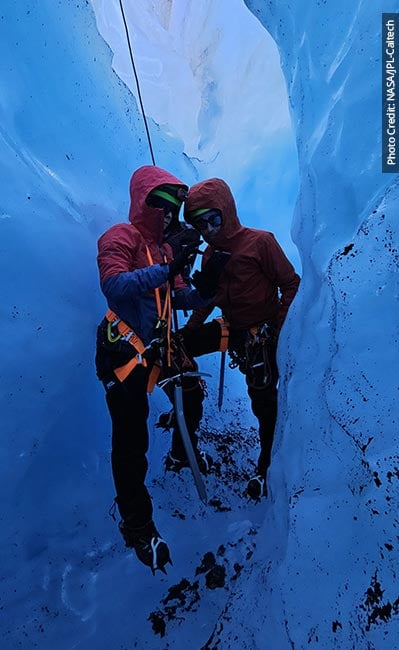
Simply put, EELS is designed to boldly go where no human (or robot) has gone before.
The mobility of EELS will allow it to access under-surface terrain, whether it be at the bottom of Earth’s oceans or under the icy surface of one of Saturn’s moons. These remote locations, however, mean there won’t necessarily be images of the obstacles ahead of time.
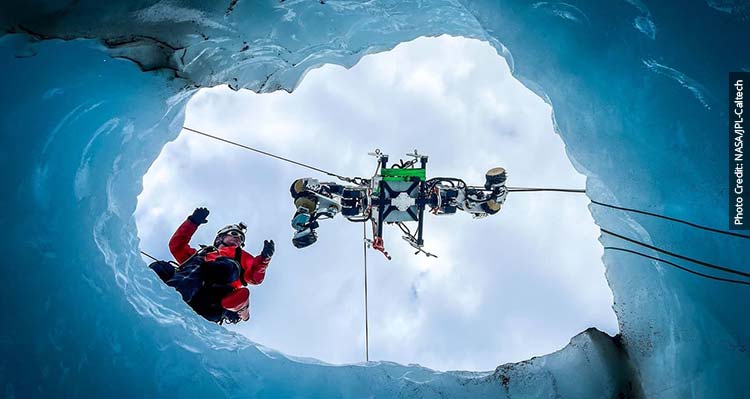
While the design gives EELS versatility in movement, another key component for success is its autonomy software, especially necessary if it is sent somewhere far away like Enceladus (up to 1.57 billion kilometres from Earth, depending on orbit).
“You can get away with a person driving a lunar rover with a joystick on Earth,” said Michael Paton, deputy autonomy lead on the EELS project. “There are only a few seconds of communication delay when navigating the Moon. Further out, the signals from the rovers on Mars take a few minutes to get back to Earth. If you want to go to Saturn, however, the signal will take 1 to 1.5 hours to return.
“Let's say [EELS was] pushing against the walls, going down, and the robot slips,” Paton said. “It needs to figure out what to do. It needs to be able to analyze risk and figure out what the best decision is without waiting for human feedback.”
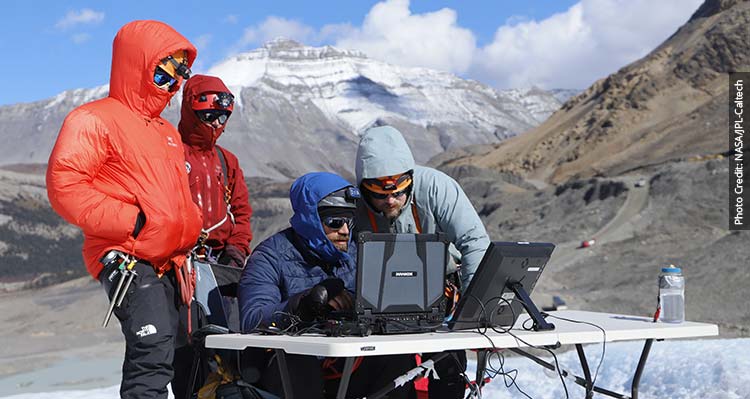
The hardware and software have exciting possibilities here on Earth as well, said Morgan Cable, science lead on the EELS team.
“Ultimately technology like this is really appealing because it can access those hard-to-reach places,” said Cable, mentioning unexplored corners of Earth’s oceans as potential EELS destinations. “On Earth, there could be lots of different reasons for [use], whether it's trying to understand a new environment or [carry out] rescue operations.”
Cable is also excited about the life detection aspect of the robot.
“Chances are life isn't just going to be hanging out [and] exposed on the surface of a world, right? There’s temperature and pressure extremes, vacuums, UV radiation — there are reasons why organisms may not be just sitting right on top of a surface,” Cable said. “Chances are they're going to be under a rock [or] in a cave down deep underground in the hard-to-reach places. And that's why these kinds of technologies are really appealing from an astrobiology standpoint.”
The Athabasca Glacier is far from the first location EELS has explored. The robot has also been put to the test in the San Bernadino Mountains, on an ice rink in Pasadena, California and on JPL’s own “Mars Yard” — an outdoor field built to simulate Mars’ surface.
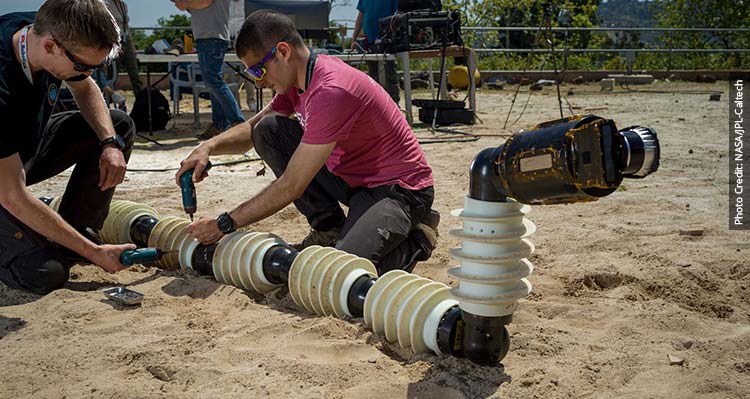
At the moment, there is no timeline for the project to be completed — EELS isn’t being created for any one specific mission — but Cable is confident that it’s not for nothing.
“I know that I'm working on something that is probably going to last longer than I will,” she said. “It's a way of contributing to something larger than yourself and I think that's really beautiful."
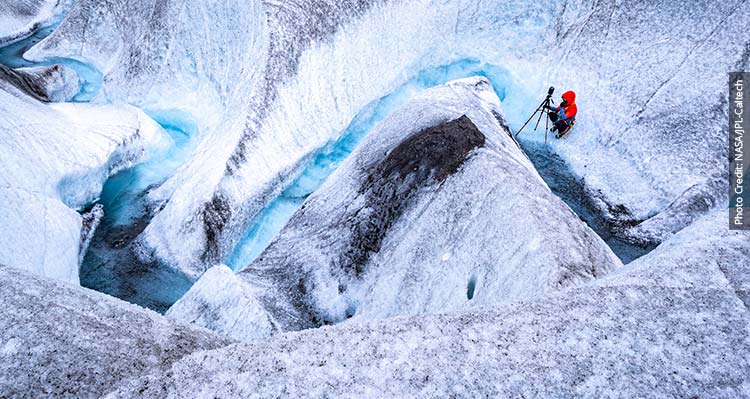
Despite its unconfirmed future destination, the EELS journey so far has been profoundly meaningful for the entire team.
EELS started as a “back of a napkin” sketch, Cable said. She and JPL robotics engineer Kalind Carpenter gave a talk at the Keck Institute for Space Studies at Caltech in 2019. The idea, the team and EELS itself grew from there.
“None of these things are done by any one person, but I was happy to be involved in the beginning,” said Cable. “To see how much it's grown and matured from the original sketches of what EELS might look like, and now seeing what it really is looking like — it's just so fantastic.”
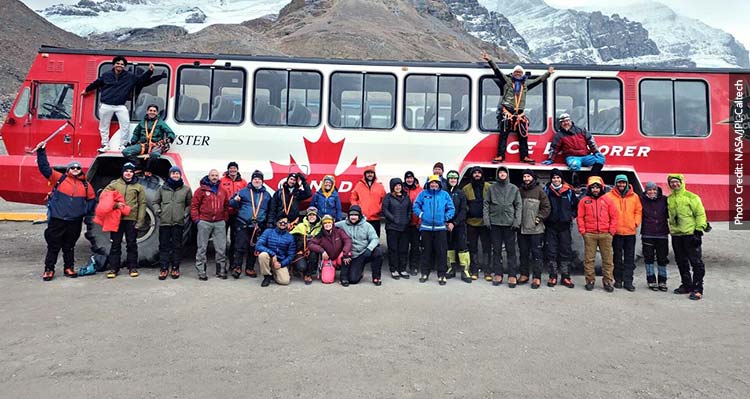
Insider tips, inspiration and deals — delivered straight to your inbox.